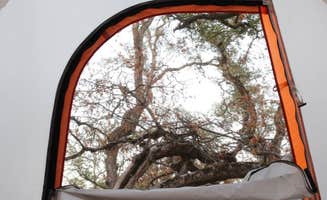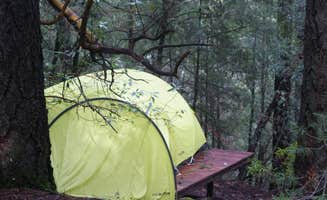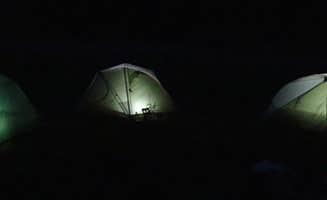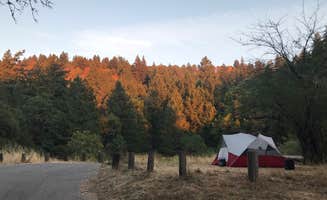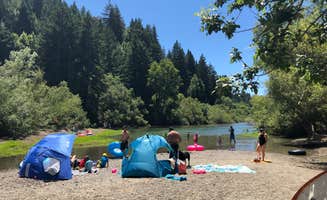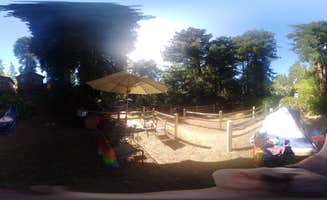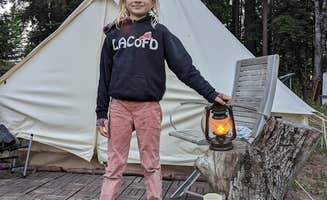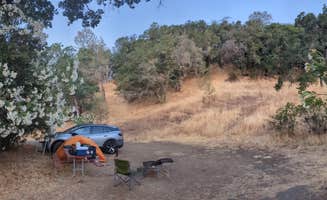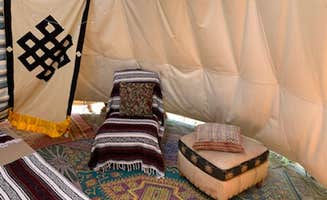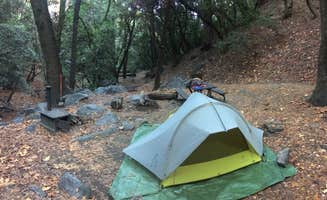Tent campsites near Clearlake, California range from remote forest sites to lakeside options with varying seasonal access restrictions. During spring and fall, temperatures fluctuate between 45-75°F, with summer highs regularly exceeding 90°F. Wildfire recovery has created unique ecological viewing opportunities at several campgrounds while altering traditional tree cover and shade availability.
What to do
Mountain biking trails: Boggs Mountain Demonstration Forest features recently rebuilt trails following fire recovery. A camper noted, "I still come here to enjoy the new growth, the impressive new trails and the new views of the valleys below" at Boggs Mountain Demo Forest.
Off-road vehicle exploration: The Red Mountain area provides extensive OHV trails accessible directly from camping areas. A visitor explained the location is "6 miles from civilization down a windy road, then up a mountain side. If you like driving off road then the trip would be worth it, especially if you plan to stay a while."
Fishing access: Cole Creek Campground offers direct lake access for anglers. A recent visitor commented, "Lots of places to fish, hike and bike. We really enjoyed our stay" at Cole Creek Campground.
What campers like
Seclusion and privacy: Buckhorn Campground provides isolation from busier areas. A reviewer noted it's "a good pick away from everyone else in the OHV park" making it ideal for those seeking quiet tent camping near Clearlake.
Extended stays permitted: Red Mountain allows longer camping periods. According to a camper, "You can stay 14 days out of the year for free" which appeals to those wanting an extended wilderness experience.
Comfortable alternatives: Pine Grove Cobb Resort offers glamping options for those wanting tent-like experiences with more comfort. A visitor shared, "Four of us stayed in the Glamping Tent for two nights and it was perfect- very comfortable and relaxing. We also had access to our own private bathroom and shower."
What you should know
Limited facilities: Most primitive tent sites require self-sufficiency. A Lower Hunting Creek visitor warned, "I car camped in an area just above the campground. A good bit of utv traffic. A party traffic."
Fire recovery impact: Many forested areas continue recovering from past wildfires. A Boggs Mountain camper observed, "I used to be a Boggs regular, so it's sad to see what remains after the fires five years ago."
Water availability: Nearly all dispersed camping locations require bringing water supplies. A Red Mountain camper advised, "You should bring a solar shower and water to drink and cook with, as there is none."
Weather considerations: Summer heat can be intense at exposed campsites. Buckhorn visitors note the area "can get very hot in the summer with limited shade" due to fire damage removing tree cover.
Tips for camping with families
Toilet facilities: Plan according to bathroom availability. At Cole Creek, facilities include "restrooms and showers" while more remote areas like Red Mountain have "bathroom facilities that could be cleaner, but I suggest that you bring your own."
Digital connectivity: Cell service varies significantly by location. A Lower Hunting Creek camper reported "Decent Verizon signal" while most remote tent sites have limited or no connectivity.
Alternative lodging: Pine Grove Cobb Resort provides cabin options when weather turns unfavorable. According to a visitor, these "serene year round cabins are perfect for everyone."
Tips from RVers
Access limitations: Many forest roads leading to tent campsites have difficult terrain. Red Mountain requires "the 4x4 trek to the campground" making most tent sites inaccessible to larger RVs.
Electronic hookups: Most tent sites lack any power. The Old Train Caboose campground offers rare tent sites with "electric hookups" for those needing to charge devices while maintaining a tent camping experience.
Seasonal road conditions: Spring access to remote tent sites often depends on recent rainfall. Prepare for muddy conditions on unpaved access roads during wet months, particularly at higher elevation campsites above 2,000 feet.


